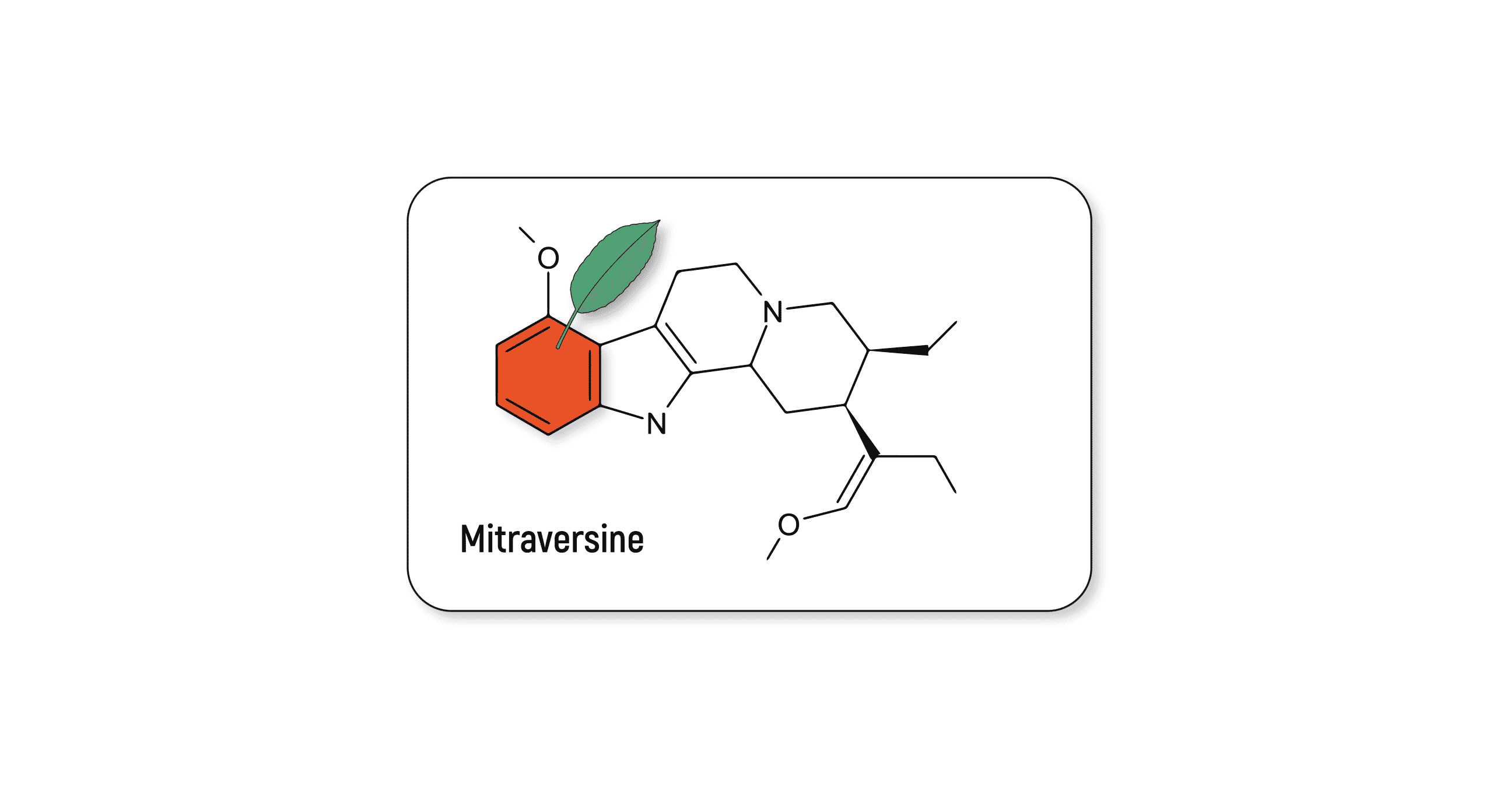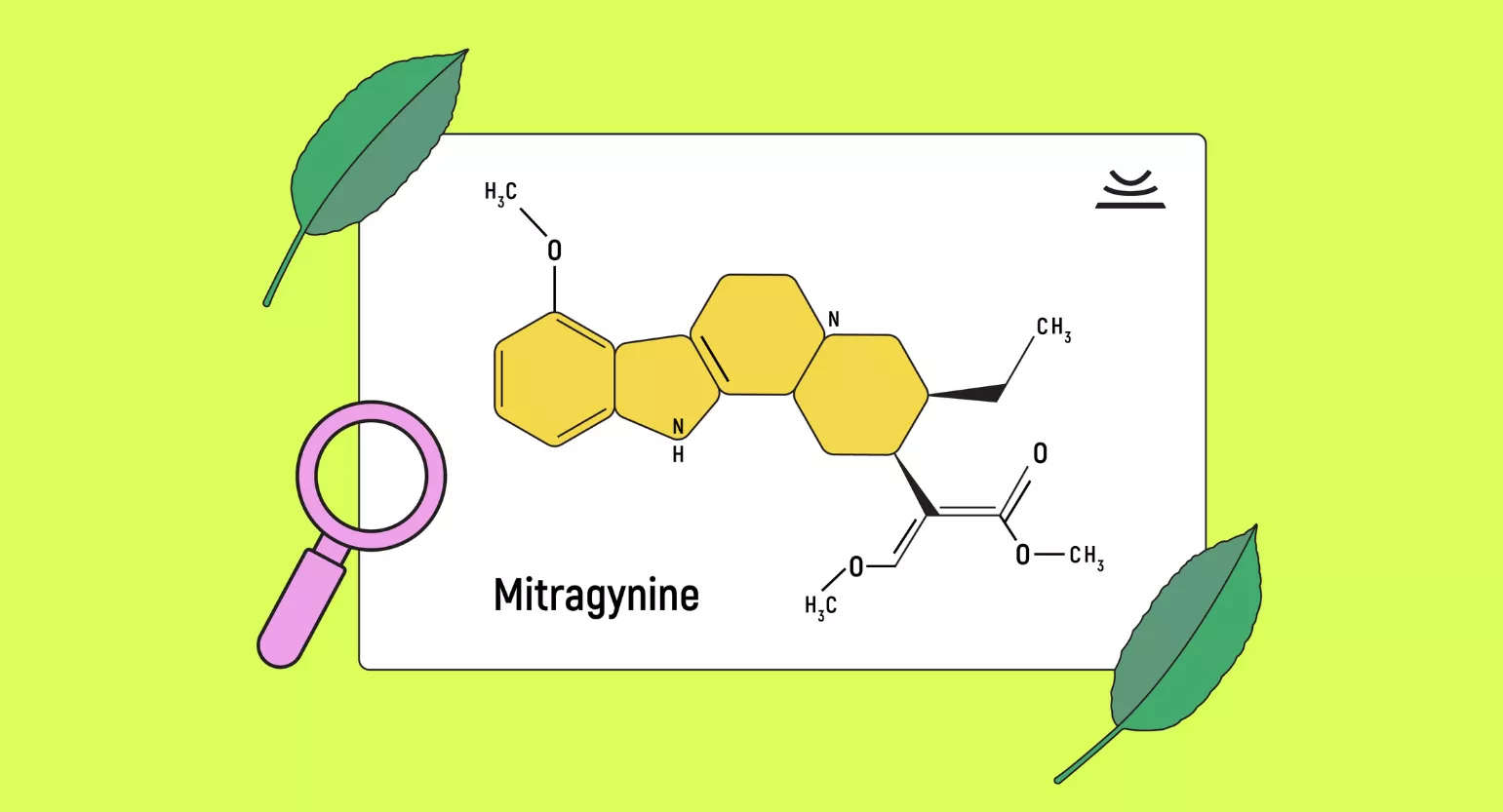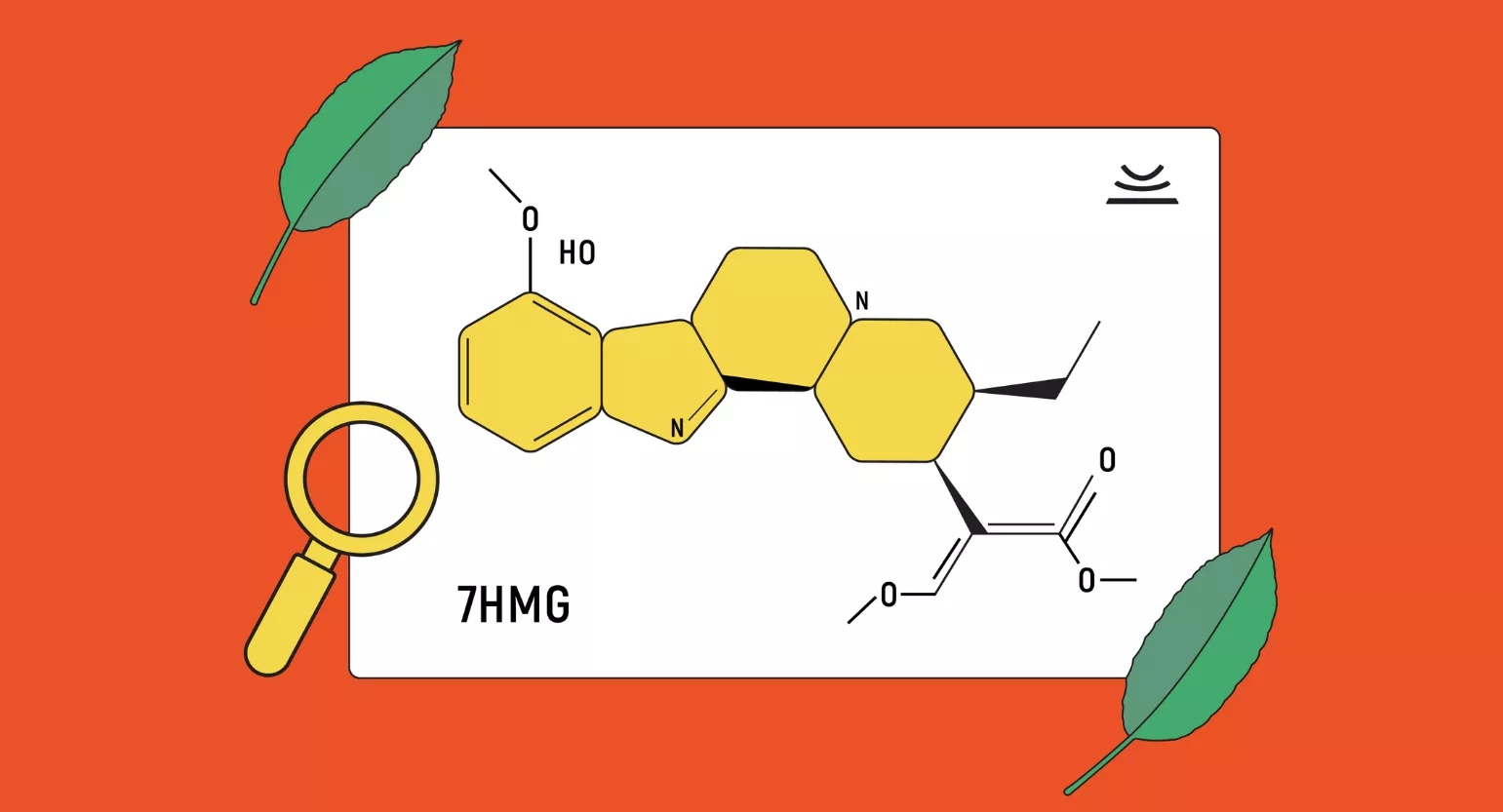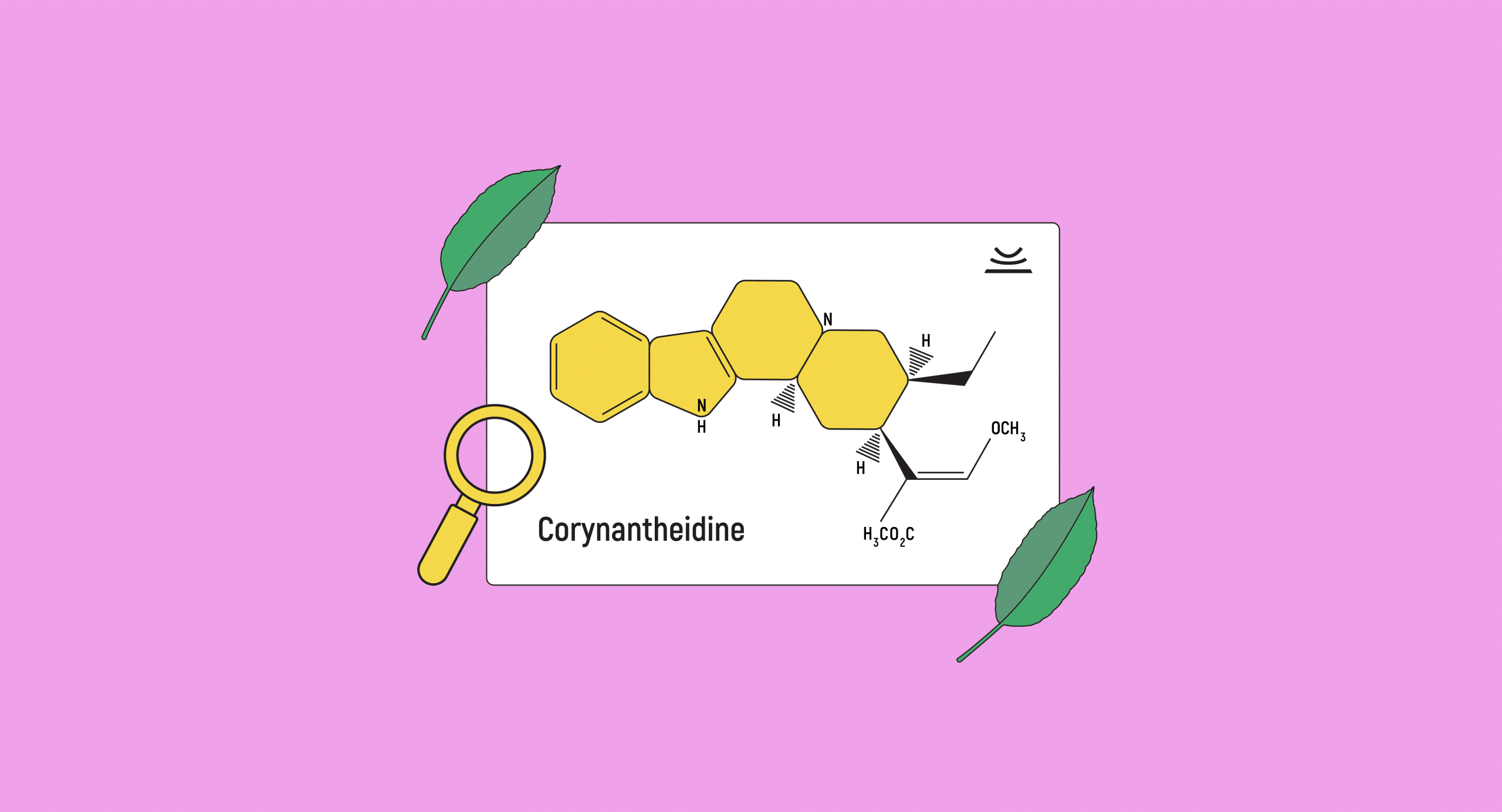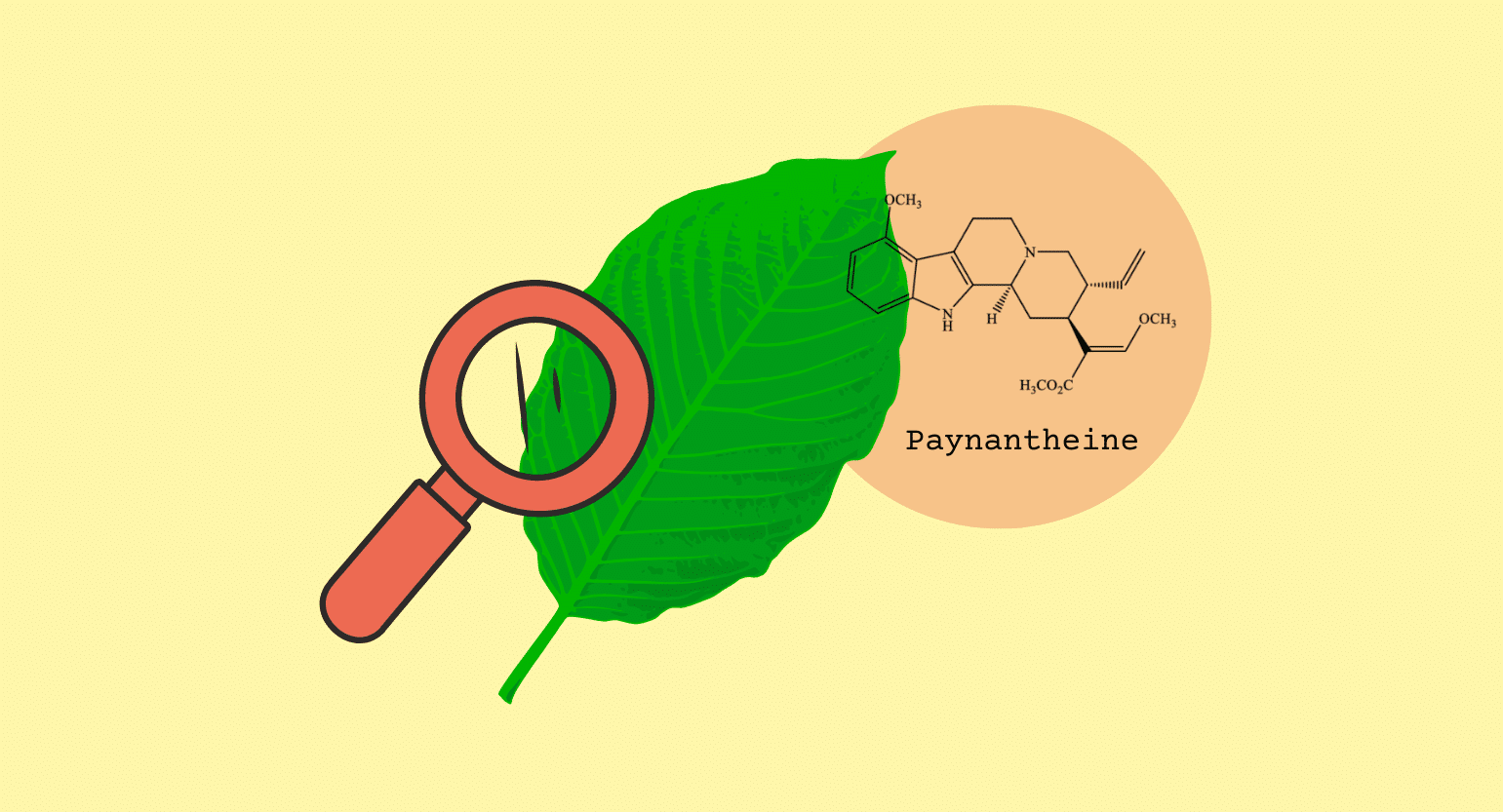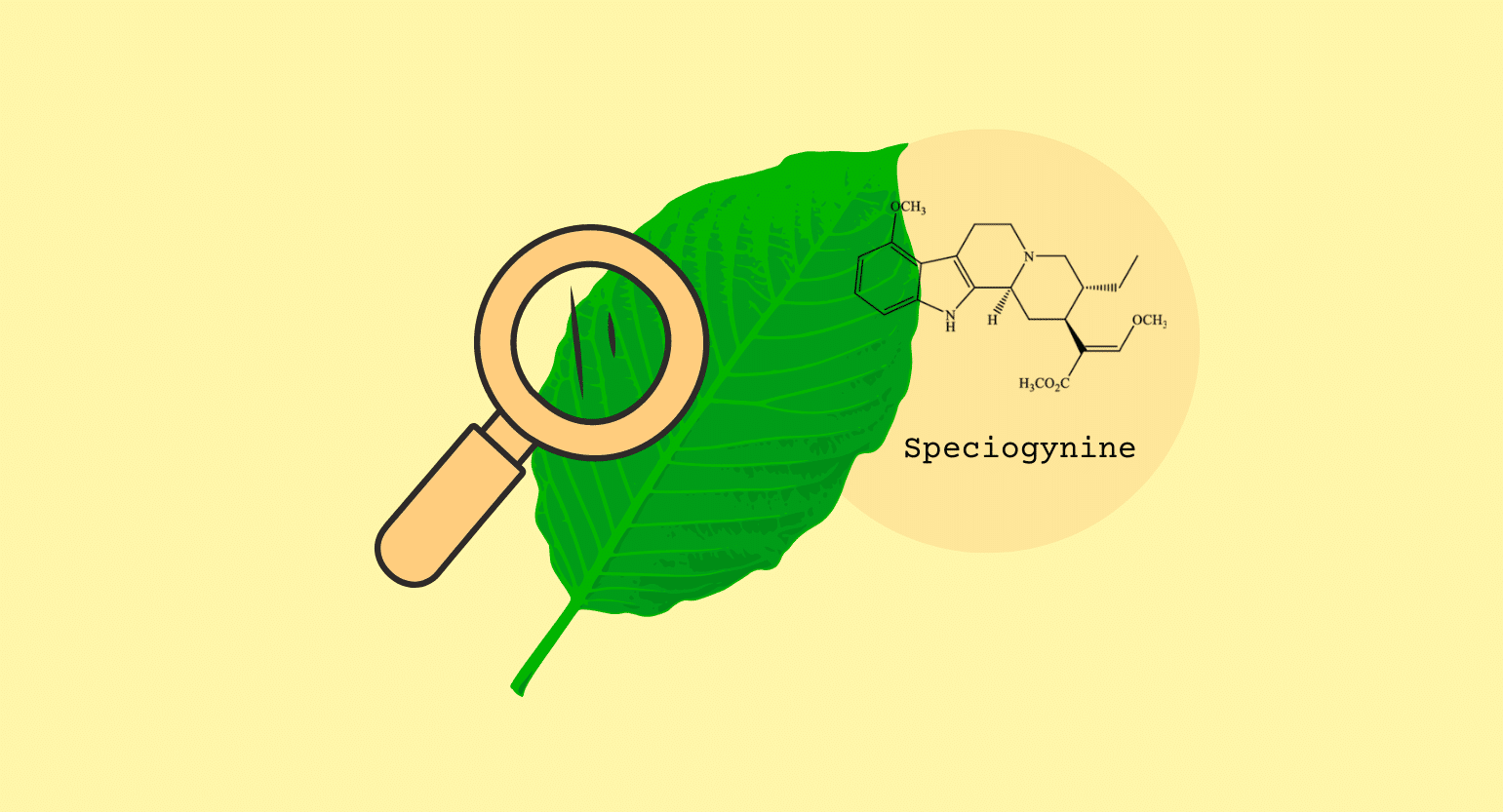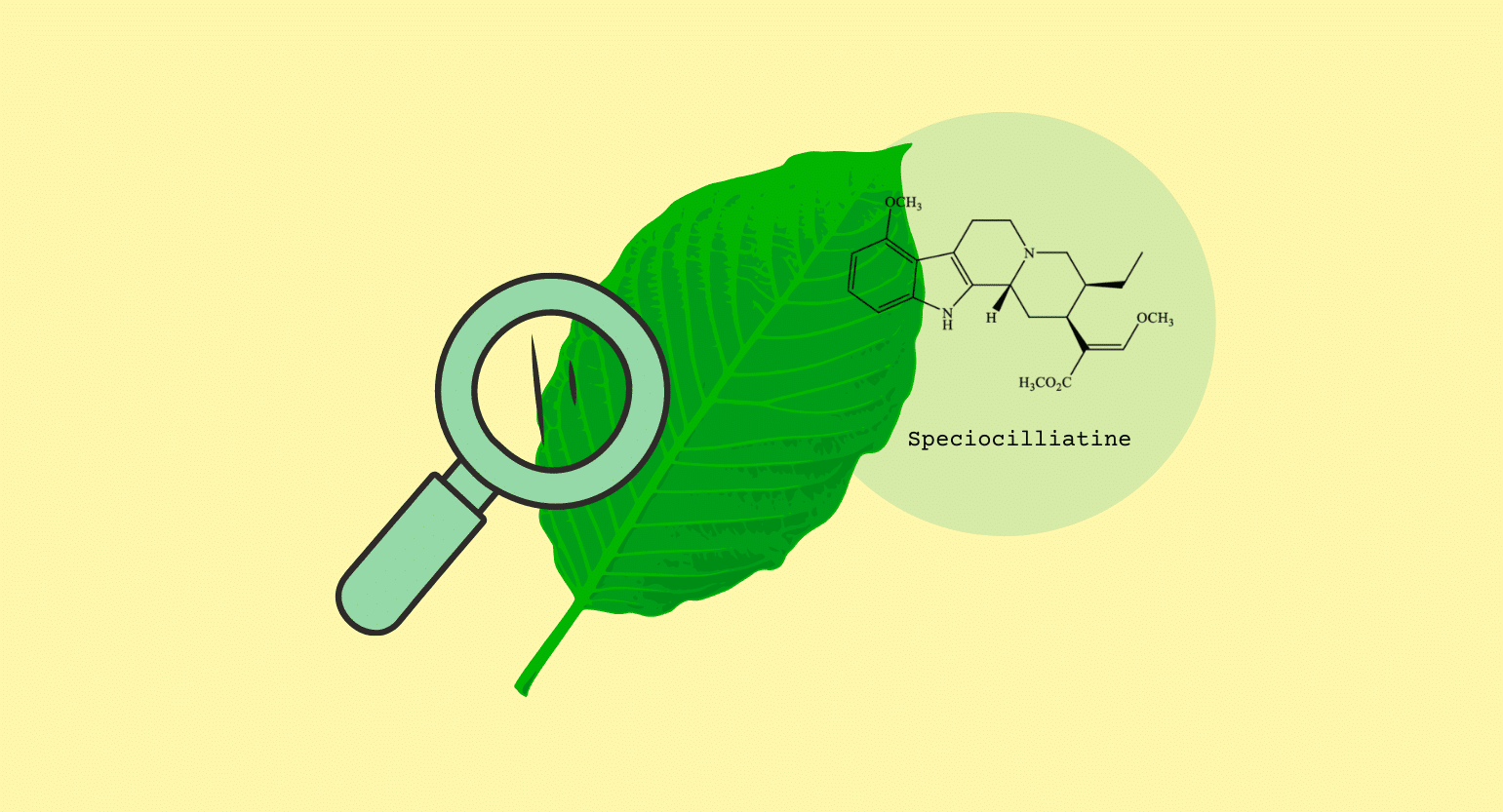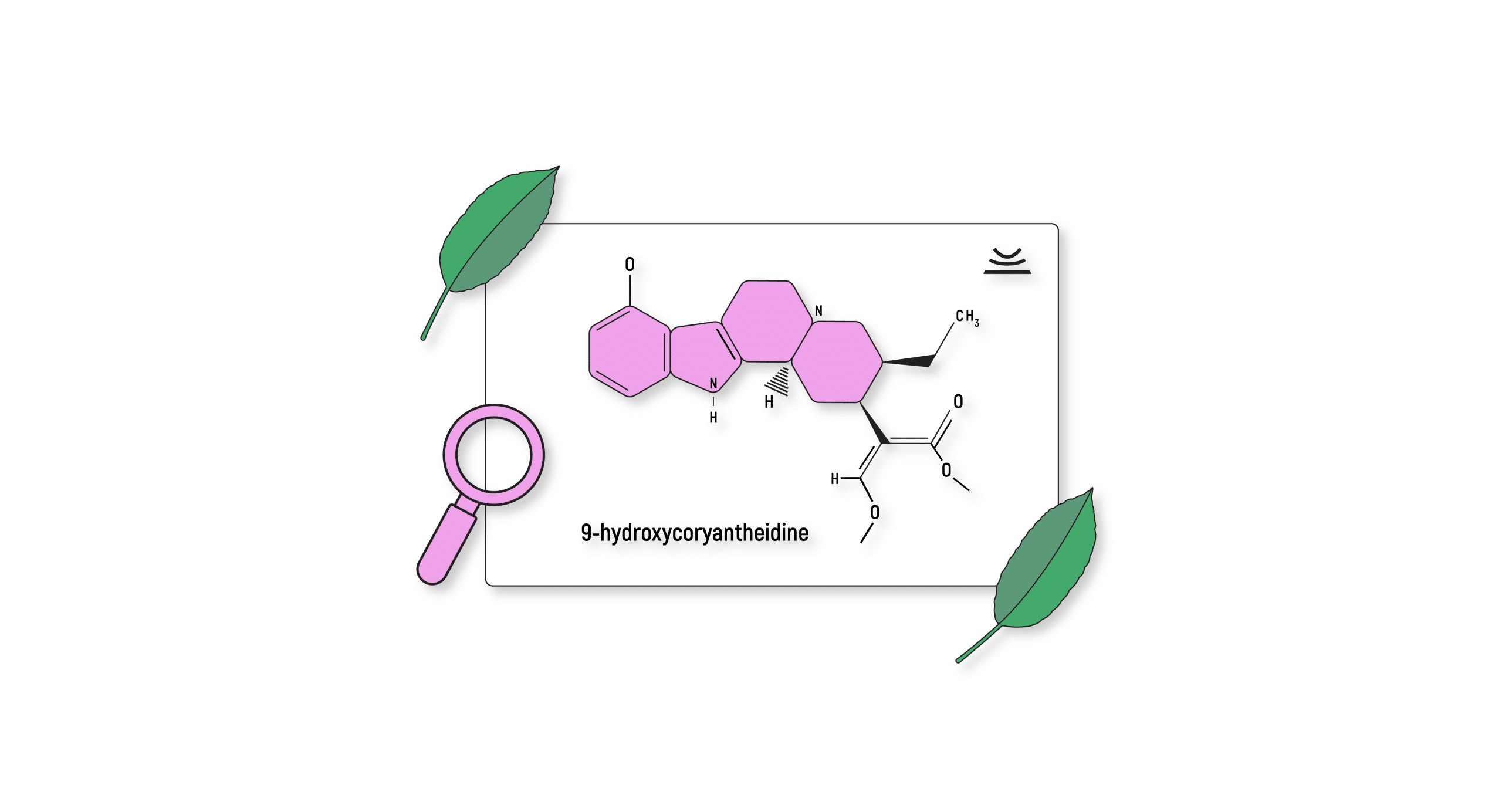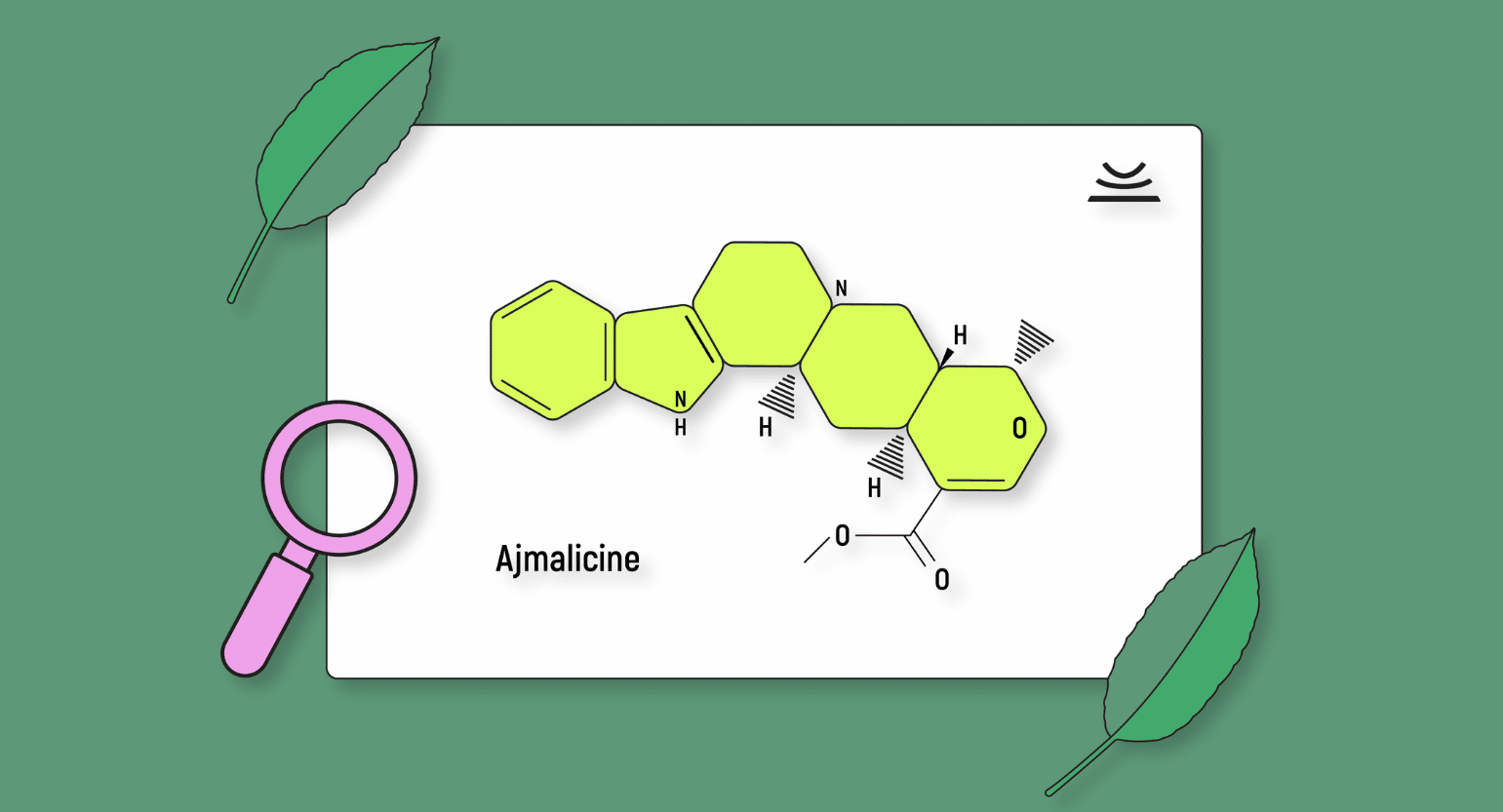What Is Mitraversine?
Mitraversine is a minor alkaloid from the Mitragyna speciosa plant, more colloquially known as the kratom tree. It’s “minor” because it appears in minute quantities in the leaves, and “alkaloid” refers to a nitrogenous compound that affects the human body on a physiological level.
The only thing currently understood about mitraversine is that it is similar in chemical makeup and molecular structure to mitragynine, the primary alkaloid in kratom leaves.
Where Does Mitraversine Come From?
Mitraversine comes from the kratom plant and, as Ellen Field noted in The Journal of the Chemical Society back in 1925, is found in kratom alongside major alkaloids, like mitragynine. Unfortunately, little else is known about how the plant produces the alkaloid and what purpose it serves throughout the plant’s lifecycle.
Which Kratom Strains Are Highest in Mitraversine?
There is no information available for mitraversine levels in different strains of kratom. Experts know that the alkaloid appears in small concentrations in kratom, but there’s not even evidence to suggest that different strains contain different amounts.
Given that mitraversine is similar to mitragynine, one could speculate that strains high in one are also high in the other.
If that is the case, then the mitragynine-rich strains listed below should contain higher-than-average levels of mitraversine:
As you might have guessed, white strains tend to have the highest levels of mitragynine, but it is a significant alkaloid and present in all strains.
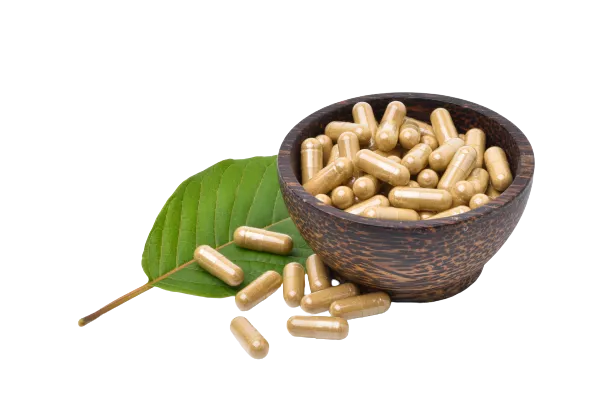
What Does Mitraversine Do & How Does It Work?
As mentioned above, no research studies suggest the effects mitraversine has on the human body. It’s one of the few alkaloids about which there is no medical information.
However, since it’s similar in structure to mitragynine, it may share an effects profile. Mitragynine is best known for providing pain relief, relaxation (at higher doses), and stimulation (at lower doses).
Mitragynine works to relieve pain by interacting with the body’s mu-opioid receptors [1]. By blocking pain signals traveling through the central nervous system to the brain, mitragynine can limit pain sensations. It’s possible that mitraversine acts in a similar fashion.
Mitragynine’s ability to bind to opioid receptors and limit signals traveling through the central nervous system is also why the alkaloid provides relaxation to the user [2]. Fewer signals mean a sense of calmness, which can also aid in falling or staying asleep. Again, mitraversine could work similarly, given how closely the two alkaloids are in structure and chemical makeup.
Finally, mitragynine binds to dopamine receptors and causes an increase in uptake [3]. Dopamine is linked to arousal, focus, concentration, and heightened energy levels. Given how similar mitraversine is to mitragynine, it’s possible that it, too, can bind to dopamine receptors in the brain.

What Other Plants Contain Mitraversine?
Aside from kratom, only one other plant is known to contain mitraversine and happens to be closely related to Mitragyna speciosa: Mitragyna parvifolia. Both plants belong to the Rubiaceae family within the plant kingdom.
Is Mitraversine an Opiate?
None of the alkaloids in kratom are considered opiates, despite some being able to bind to opioid receptors in the body and induce similar effects to opiates. Mitraversine is similar to mitragynine, so it’s possible that it can also bind to these receptors. Still, the compound is not an opiate.
Is Mitraversine Safe?
As mentioned above, there has been almost no research on mitraversine, so its effects, usefulness, and safety are all relatively unknown as they pertain to this specific alkaloid.
However, since kratom is considered safe by many experts, it’s not a jump in logic to assume that the mitraversine you’d get from kratom is also safe for consumption.

Side Effects of Mitraversine
That said, there are some potential side effects you could experience when consuming kratom and, by extension, mitraversine. The most problematic side effect you could encounter is addiction. Kratom is less addictive than the opiates it sometimes mimics, but anything that produces a physiological effect can be addictive. Limiting your doses and taking regular breaks can go a long way in avoiding this major downside.
The other side effects of consuming kratom are less severe and are usually acute. They include:
- Dizziness
- Gastrointestinal issues
- Hazy thoughts
- Headache
- Lethargy
- Nausea
- Vomiting
These side effects are also reportedly less severe with smaller doses of kratom.
Also see: How Long Should I Wait Between Kratom Doses?
How Much Mitraversine Should I Take?
Mitraversine isn’t isolated for use as a standalone product, so anyone who wants to explore the potential benefits of this alkaloid will need to take kratom powder. The amount of kratom powder you consume will depend on the effects you’re after.
Stimulative effects are most apparent in the lower dose range, between 1 and 3 grams. More relaxing effects kick in between 3 and 6 grams of kratom powder and are more potent between 6 and 8 grams. Relief for mild pain is usually most noticeable between 3 and 6 grams, and 6 to 8 grams is best for more severe pain.
Related: Kratom Dosage Guide
How Long Do the Effects of Mitraversine Last?
Once again, the lack of research on mitraversine means we currently have no answer to this question. However, the effects of kratom generally last between one and five hours for most users.

Wrapping Up: What Research Could Tell Us About Mitraversine
Mitraversine is one of many minor alkaloids that appears in kratom. Unfortunately, it’s one of the alkaloids with minimal research, so there is little to confirm what it does and how it functions in the body. It’s reasonable to assume that it shares its effects profile with mitragynine to some extent, given that the two are so similar. However, more research needs to confirm this.
- Suhaimi, F. W., Yusoff, N. H., Hassan, R., Mansor, S. M., Navaratnam, V., Müller, C. P., & Hassan, Z. (2016). Neurobiology of Kratom and its main alkaloid mitragynine. Brain research bulletin, 126, 29-40.
- Machelska, H., & Celik, M. Ö. (2018). Advances in achieving opioid analgesia without side effects. Frontiers in pharmacology, 9, 1388.
- Johnson, L. E., Balyan, L., Magdalany, A., Saeed, F., Salinas, R., Wallace, S., … & Grundmann, O. (2020). Focus: Plant-based Medicine and Pharmacology: The Potential for Kratom as an Antidepressant and Antipsychotic. The Yale Journal of Biology and Medicine, 93(2), 283.

